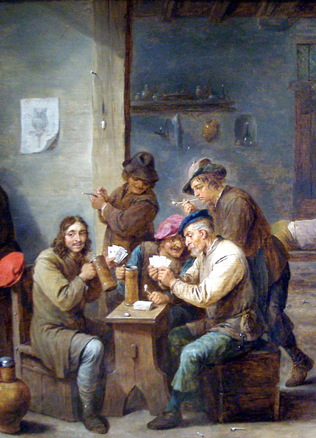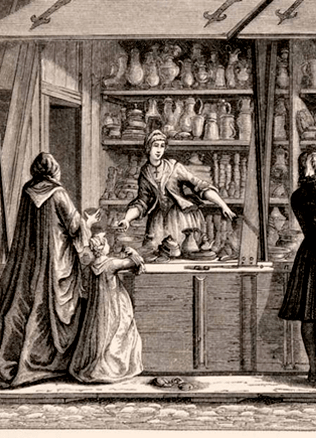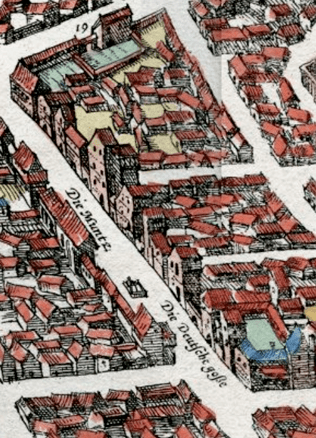Neighbours: victories of the Lithuanian words
Do You Know?
In the Middle Ages the neighbour was not an individual living next to you but a separate social strata, which occupied an intermediate position between serfs, unfree household staff and free peasants. The archaic link of the neighbour with his master, the latter’s estate reveals etymology of the term: subordinates who made their home or were settled next to a nobleman’s courtyard (village), according to the laws of the Lithuanian language acquired the name of a neighbour (kiemionas).
Neighbours or kiemionys is the name of the group of the inhabitants, which is sometimes written down in the Lithuania language in the offices of ethnic Lithuania handled in the Ruthenian, Latin or Polish languages. At the present time about forty documents of the end of the 15th-17th centuries are known, which more or less explain the phenomenon of neighbours. The most significant of them date back to the 16th century and they are most abundant in number. And those compiled before the volok reform when the society under discussion had retained the greatest number of archaic features are most valuable. In the 17th century it is the neighbours’ land and the place names Kaimynai, Kiemionys that are most often mentioned. The term was more frequently used in the offices of small rural district administrations, lower courts and private estates. It was seldom used in the Chancery of the Grand Duchy of Lithuania. Hence, the term functioned in the living language and therefore it “pushed its way” to the official letters of the local administration, and a Ruthenian equivalent had to be used in the Chancery of the Ruler. The Polish word poddany “a subject, a subordinate, a peasant” was translated as a neighbour in the Lithuanian writing of the 16th century (Mikalojus Daukša Postilla). The earliest use of the term of the neighbour was in Lithuania, in the palatines of Vilnius and Trakai. It became common in Samogitia in the middle of the 16th century. This term was not used in the Rus’ lands. At the end of the 16th century kaimynas (a neighbour) had a synonym valstininkas “a peasant”. This shows the condition of the disappearance of the layer of neighbours when there was no greater difference between them and the enslaved peasants, residents of a small rural district, and only the representatives of other layers of the inhabitants could become the neighbour.
Several glosas (Lat. glossa – and old or rare word u003c Grk glōssa – language, tongue) in the historical sources of the neighbours reliably testify to the fact that the service of their society, the duties to the master is nothing more than služba tiahlaja “tiaglo, corvee service (work), rent of serfdom working off”. Thereby the “indifference” of the Ruler’s Chancery to this Lithuanian word – the term – could be explained: it is not difficult to translate it into a more understandable liudi tiahlyje “tiaglo people, corvee people, serfs”. More etymological and literal translations of the concept kaimynas (a neighbour) – selianin, susied, confirming that institute of neighbourhood existed in Lithuania in the 15th century are known.
In what did a neighbour differ from a serf?
The layer of neighbours differed from tiaglo in several important features. First, neither legally, from the administrative aspect, nor by their duties the neighbours were related to the people of a small rural district, peasants. Second, they did not have their own land and worked the land assigned to them by their master (no matter whether he was the ruler or a noble) defining their status approximately like that: “We live in the fields of the master’s estate, near the estate (around the estate) and work his land.” Their houses could not be moved from one field into another, only the master had the right to change the plots of land assigned to them. In the middle of the 16th century the land of the neighbours was constantly used plots of land, but the neighbours did not manage the land. Third, their works and duties were different from those of the people of a small rural district because the neighbours did not do any work for the Ruler, did not give him tithes and did not perform any specific services. Fourth, the neighbours did not belong to the people of the estate, the unfree household staff, serfs, labourers who worked exclusively in the master’s estate, and this distinction (Lat. distinctio – separation) is strictly underlined in the documents.
Neighbours’ work and duties were simple. Apart from work on their temporary plots of land where they sowed their master seeds only, ploughed with the master’s animals, bred only the master’s animals, they also had to perform their corvee in the fields of the estate: they had to plough for several days, to mow the meadows of the estate and prepare hey. It took no more than several days per year to do this kind of work, but several members of the family worked. The neighbours also worked with an axe (prepared firewood?), guarded certain objects. If the neighbours’ master was the Ruler, they had to give him a hen and ten eggs when the latter came to stay at the estate. That was not considered to be a tithe. Duties were performed on behalf of the household staff, the family or the service – a larger obligatory family staff.
A slave’s “career” or a peasant’s downfall?
The Lithuanian term “neighbours” is used to define the layer of serfs of old origin. Its genesis is inseparable from the development of the lower social strata of serfdom subordination when the Lithuanian nobility was forming.
As compared with the unfree household staff of the estate, serfs, labourers (parobkai), the neighbours belonged to a higher social level.
Some neighbours were free and could change their master if they paid back their debts and left somebody on the master’s land in their place. Konstantinas Jablonskis proved that the neighbours originated from serfs, from unfree household staff through evolution of serfdom institute when difficulties in maintaining serfs urged the master to assign them his land to work and settled them there for a longer time. In this way a serf moved to a higher social level, in the long run he could acquire even freedom of leaving. This resembles the Roman colons a little. Juozas Jurginis developed these conclusions underlying the fact of free people becoming neighbours of the nobility, the future landowners. He presented a number of facts showing how an impoverished farmer who had sold himself for a debt to a nobleman or any other creditor and worked to pay back the debt, a peasant, or a town-dweller became a neighbour. This meant putting oneself in pledge. Another way was to become the neighbour of a claimant for a punishment or a fine for some time. These ways meant a temporary or even eternal descent in the social position for a free man.
“The neighbour” of the nobleman’s courtyard
It is difficult to characterise the original appearance of the society of neighbours because in later years social relations changed. The following novelties can be indicated: neighbours who have personal freedom, performance of corvee duties and payment of taxes not only from the family but also from one’s service, appearance of the lands of the neighbours that were constantly used and never changed.
We can only make more or less reasonable guesses about the archaic neighbour: he lived on the land assigned to him by the master, worked with his tools and implements, sewed his seeds, served with his whole family.
The master, however, avoided any expenses of maintaining them as serfs, as unfree family of the estate. The archaic link of the neighbour with his master, the latter’s estate allowed Juozas Jurginis to offer reliable etymology of the term: the subordinates who made their home or were settled on the master’s land next to a nobleman’s courtyard (village), according to the laws of the Lithuanian language acquired the name of a neighbour (kiemionas).
The chronology of appearance of social institute of neighbours is not clear. They were “later” than the Lithuanian institution of serfdom that was started to be mentioned in the 18th century because partly it was a result of its disappearance. The first data about possible serfs that were “set free’ in Lithuania (but are they neighbours?) can go back to the second half of the 14th century. The beginning of granting the veldamai, free people to the noblemen is the latest valid margin of appearance of neighbours. Grand Duke Vytautas (1392–1430) started this practice of granting. Though the development of this Lithuanian society determined appearance of serfs such as neighbours, the latter were not identified with the veldamai: the origin, work and duties, the nature of land ownership, personal dependency and the time of appearance of their strata differed.
Literature: K. Jablonskis, Istorija ir jos šaltiniai, parengė V. Merkys. Vilnius, 1979; J. Jurginis, Baudžiavos įsigalėjimas Lietuvoje. Vilnius, 1962.
Artūras Dubonis



